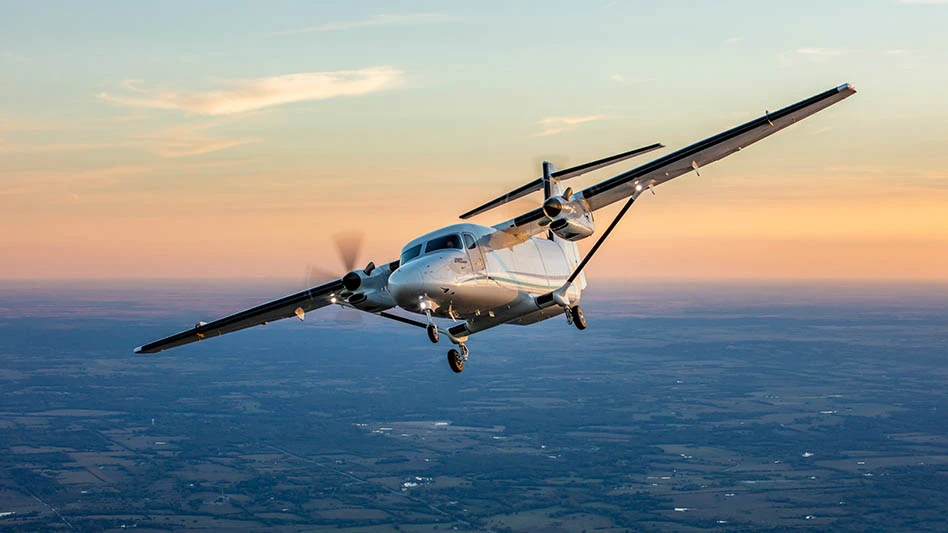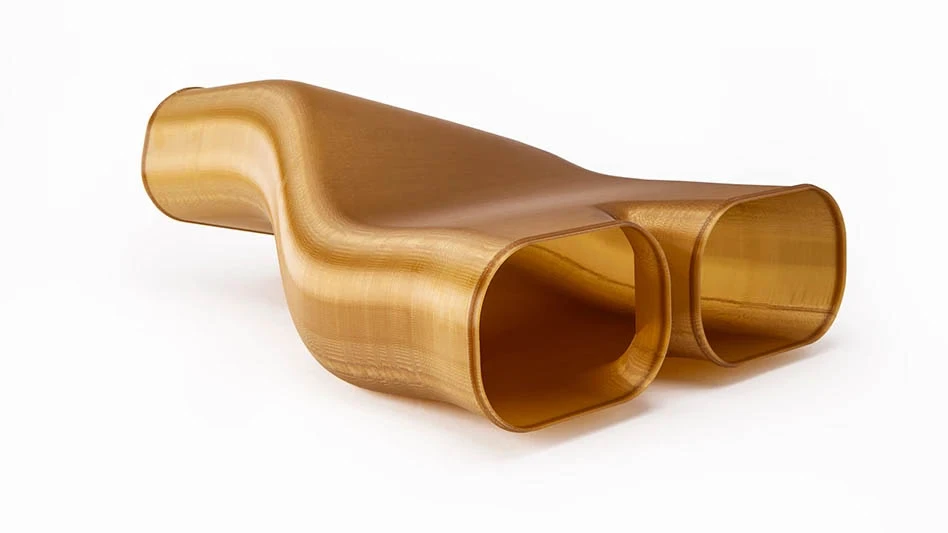
Two routers and a newly added waterjet cutting machine don't sound like a big operation. However, when you consider that these systems are in use without pause 24 hours per day, typically seven days per week, to support the material requirements of 123 of its own assemblers and several outsource manufacturing vendors, it's really quite impressive.
Those are just the hands that assemble cabinetry for Midcoast Aviation's green aircraft completion center in Cahokia, IL. The CNC shop also kits sheets of material and makes tooling for the company's composites manufacturing operations; cuts parts, including sheet metal that is used for maintenance and refurbishing; and supplies kits of material for its sister company Savannah Air Center in Savannah, GA.
"There's just no end to it.
It's been like this for five years," says Justin Howell, Midcoast Aviation's supervisor for CNC operations. Howell, who has been with the company for 12 years, was working as a builder in the cabinet shop five years ago when the company bought a 3-axis CNC router.
The superior productivity of the router was quickly recognized and Howell was chosen as a programmer.
Feeding the Beast. Within a couple years, the company added a 5-axis router and started a program of training others in programming the Mastercam CAM software that is used to create toolpaths for this equipment. Midcoast Aviation has three Mastercam X3 Router seats and six fulltime programmers, including Howell.
Programming is not a bottleneck; the company can still add three more programmers with existing licenses and more programmers are being identified and trained.
Howell explained that when he became a programmer, he was sent to a course with Mastercam-certified trainers at the local Mastercam reseller. He was overwhelmed by all of the software's capabilities. Today, if a router operator seems like a good candidate to become a programmer, Howell will work with him over time to familiarize the candidate with all of the software's basic capabilities.
He'll explain the software's CADlike programming interface and what the most commonly used icons do.

Midcoast Aviation models parts that conform to an aircraft's curved surfaces on Mastercam.
Like A Fighter Pilot. Howell likens being CNC Supervisor for an operation that is working at nearly 100% equipment utilization is like being a fighter pilot, because so many things are flying at him at once: SolidWorks CAD models generated by the engineers and imported for CNC router programming, schedules of kits to be manufactured or outsourced, 3D molds to be made for composites manufacturing operations, as well as program updates based on the most current design changes.
At present, both routers are used on two shifts for cutting cabinetry components and during the third shift, the routers cut sheet metal that is used primarily for the company's maintenance business. The department recently integrated a Mastercam-programmed, Flowjet water-jet cutting system into the mix. This will allow for the cutting of sheet metal at higher speeds and eliminate the need for deburring operations to smooth out metal edges.
The waterjet cutter will also free up the routers to do more cabinetry work and expand the types of sheet that can be cut, from strictly aluminum to steel, stainless steel and other materials. All of this capability will be added to the CNC department without having to add another seat for CAD programming.
Always Moving Forward. Even with the new waterjet system in place, Midcoast Aviation will still be at 100% capacity as it has been for months on end. Howell works from a plan devised by schedulers who completely detail what parts need to be cut and kitted for assemblers on any given day. To keep the steady pace of projects moving forward, the company relies on a number of CAM features to enhance productivity and reduce costs.
Seamless CAD Transition: Projects start in Midcoast Aviation's engineering department and are then transferred to the CNC department in the form of a SolidWorks CAD model. These are imported into Mastercam without the need of further modification.
This procedure is fast and ensures that none of the design intent is sacrificed in transition. Sometimes engineering of aircraft cabinetry is outsourced. In this case, the CAD models come in as CATIA or other parasolids files. The CAM software is versatile enough to deal with any of these without resorting to special translators.
Nesting: Getting as many parts as possible from a single sheet of material is very important for profitable operation. This need is met by the CAM software's automatic nesting feature.
3D Tooling & Fixtures: The CNC Department deals with numerous sculptured 3D parts that are manufactured to conform to an aircraft's curved surfaces, used as tooling for composite part manufacturing, or as fixturing to hold and orient parts on the routers. The majority of this programming is done automatically using the data that is resident in parasolid models. In many cases much of the 3D drawing is done in Mastercam itself, which makes it very fast to produce the tooling and fixtures required by various manufacturing processes.
Backplot and Verify: The need to get parts right the first time is complicated by the sheer complexity of the work the CNC Department is called on to perform."We do quite a bit of 5-axis stuff," Howell says, "for example, some of the wildest looking tools and molds you could imagine. These are for our composite shop where they make components out of molded fiberglass." To ensure efficient and complete 5-axis cutting, Midcoast uses the software's backplot and verify features on a daily basis.
Backplot provides a computer-animated view of the tool as it goes through its operations to ensure all the moves can be made without crashing. Verify generates a color-coded 3D model of the part, which provides immediate corroboration that all of the material, but not too much, has been removed from the right places.
Over the Horizon. Once the CNC department has integrated the waterjet into its manufacturing portfolio, it will begin taking a serious look at adding a CNC mill. The department currently manufactures many sculptured aluminum parts on its CNC router because it ensures getting a fast turnaround. These could be done more efficiently and with better finish with a CNC mill. When the mill does materialize, the programmers won't skip a beat putting it into operation, since the CAD programming environment is essentially identical to the one they are currently using. In spite of work coming in from every possible direction, Midcoast Aviation's CAD System continues to get nearly 100% utilization out of its cutting equipment. That won't be changing any time soon.
CNC Software, Inc.
Tolland, CT
mastercam.com
Midcoast Aviation
Cahokia, IL
midcoastaviation.com

Explore the June July 2009 Issue
Check out more from this issue and find your next story to read.
Latest from Aerospace Manufacturing and Design
- July is for learning – so drop in for this month’s second Manufacturing Lunch + Learn
- Essential strategies to protect your data
- NASA selects instruments for Artemis lunar terrain vehicle
- Twin-cutter boring head
- Bell awarded funding for X-plane build phase of SPRINT program
- Shaft coupling clamps
- #46 Lunch + Learn Podcast with SMW Autoblok
- Gleason Corp. acquires the Intra Group of Companies





